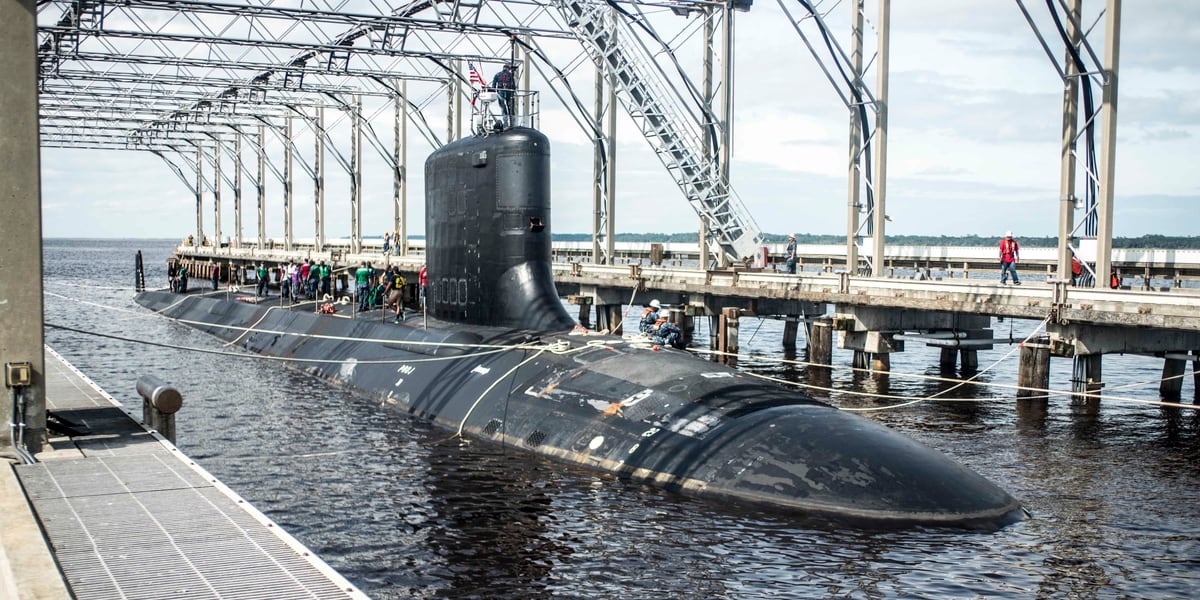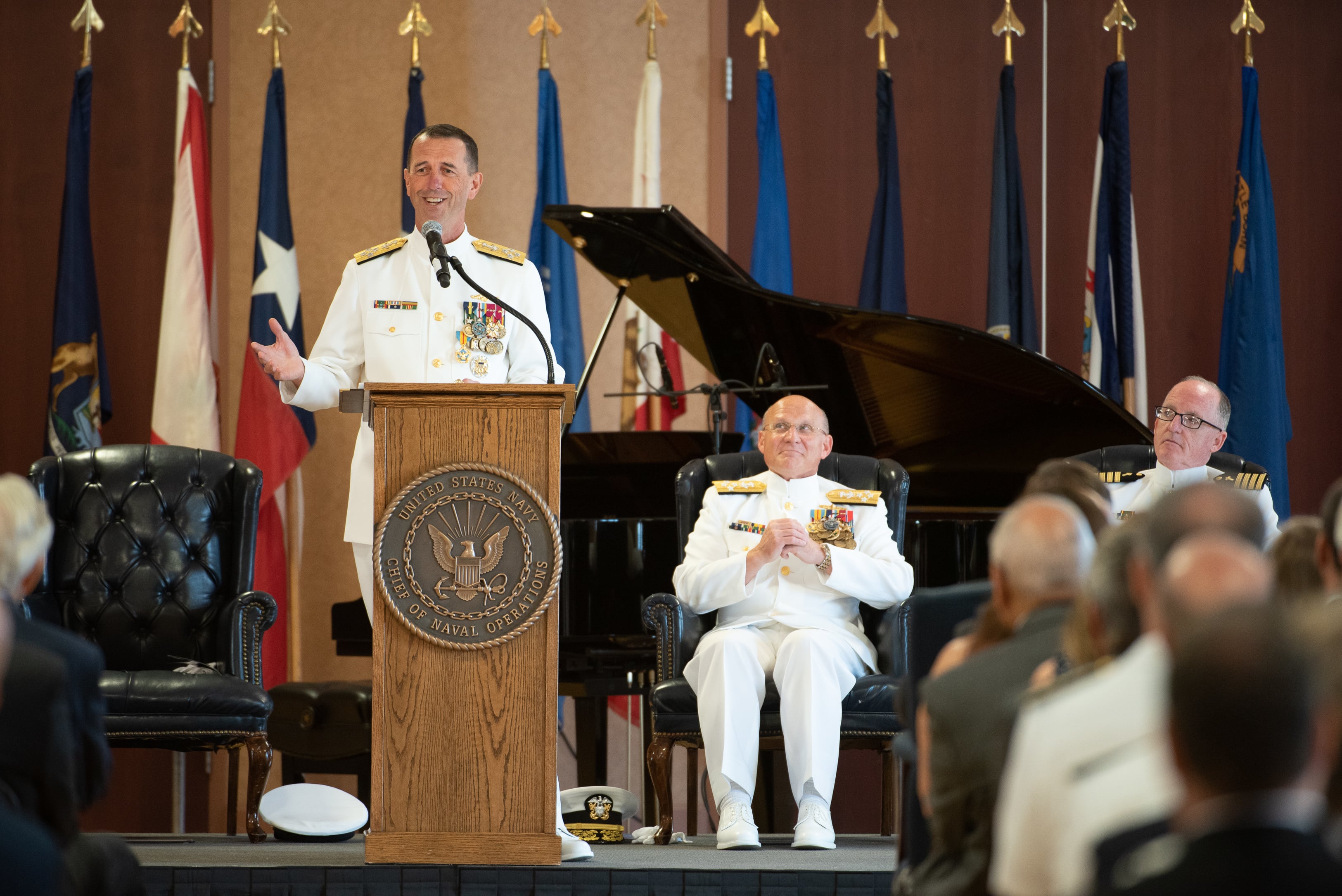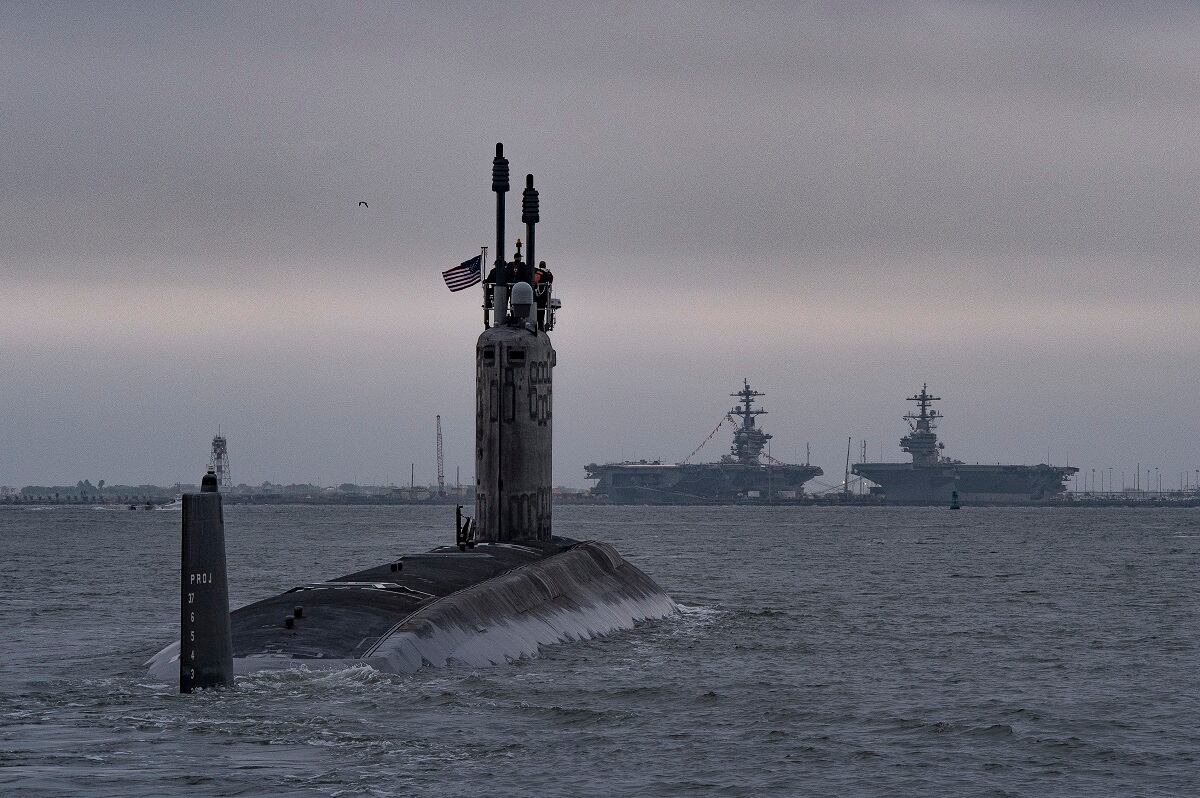WASHINGTON — Submarine building, the pride of the U.S. Navy’s shipbuilding efforts over the past decade, is facing a mountain of uncertainty, a point underscored by the replacement of senior members of General Dynamics leadership, compounding delays with construction of the Virginia-class submarine and nagging questions about the quality of the work after a high-profile welding issue threatened to trip up the Columbia-class ballistic missile sub program at the starting line.
Adding to the uncertainty for General Dynamics, which operates the Electric Boat shipyard in Connecticut, are indications that profits from constructing Virginia-class subs may be slipping. And challenges in training new workers in the complex world of building subs as well as concerns that the Columbia program might negatively affect General Dynamics’ bottom line are impacting General Dynamics’ partner yard Huntington Ingalls Industries in Newport News, Virginia, as well as the U.S. Navy.
Furthermore, a contract for the significantly larger Block V Virginia-class submarine, expected to be one of the largest in the Navy’s history, has been repeatedly delayed amid disputes over labor rates, sources told Defense News. That contract is more than a year past due, according to Navy budget documents.
RELATED

In September, General Dynamics pushed out Electric Boat President Jeffrey Geiger. Industry and Navy sources, speaking on the condition of anonymity, said Geiger’s replacement was the culmination of mounting frustration on the part of the Navy. That came to a head when quality control issues surfaced with missile tubes in production destined for the Virginia Payload Module, Columbia-class subs and the United Kingdom’s replacement ballistic missile sub.
Geiger’s ouster came on the heals of General Dynamics replacing long-time executive John Casey as head of the Marine Systems division when he retired earlier this year.
The shakeup, delays and lingering issues put the Navy and the submarine-building enterprise at a crossroads. It’s clear that the Navy’s efforts to ramp up production of its Virginia-class attack boats ahead of Columbia have encountered myriad issues and delays. But while delays may be acceptable for the Virginia program, the interconnected nature of submarine building means those delays could eek into a program that the Navy has for years insisted cannot be delayed any further: the replacement of its aging Ohio-class ballistic missile subs, part of the nuclear deterrent triad.
The Navy has said Columbia must be ready for its first patrol in 2031 to ensure the nation doesn’t fall below a dangerous threshold where retiring Ohio-class submarines leaving the country without an adequate number of boats to execute its deterrent strategy. But to head that off, the Navy may have reduce its expectations of the industrial base’s capacity to build submarines, said Bryan Clark, a senior fellow at the Center for Strategic and Budgetary Assessments think tank and a retired submarine officer.
“The Navy is going to have to reduce its appetite for submarine capacity while it gets the construction process in a better position,” he said. “All of the things we have seen in the past year in the submarine-building enterprise are the results of the ramped-up production levels and the challenges that EB [Electric Boat] faces in hiring more workers up in Connecticut.
“They’ve been growing capacity, investing in infrastructure; they’re trying to hire a bunch of workers and design engineers. [But] there just isn’t a large workforce of those kinds of people up there as opposed to in Hampton Roads or the Gulf Coast. So there are a lot of challenges in ramping up production to [increase] Virginia-class production and, in addition, starting Columbia and beginning the Virginia Payload Module-equipped Virginias, which is a 30 percent larger submarine.”
RELATED

A bridge to Columbia
In March, Defense News reported that all the Virginia-class submarines under construction were between four and seven months behind schedule. Naval Sea Systems Command pointed to the cumulative effect of ramping up to building two Virginia-class submarines per year. In a statement, the service’s top acquisition official said the Navy was continuing to confront material, labor and shipyard infrastructure issues.
Labor issues in particular hit the Newport News yard, which told investors in a recent earnings call that profits had slipped by about 23 percent on the Virginia sub building because of delays associated with labor issues.
In the face of the mounting issues, the Navy should be willing to make difficult choices to get back on an even footing, Clark said.
“Are we going to make some tough choices and dial back submarine construction deliberately to make sure we can get Columbia started correctly?” he asked. “And that means maybe we slow down Virginia, maybe we go to one per year for at least a couple of years to catch up.”
Clark said the Navy should continue to fund two submarines per year but should expect that they will take longer to build while General Dynamics and Newport News stabilize their labor and parts issues.
Paring back submarine production is a tough pill to swallow for the Navy, as it’s been fighting for years to prevent a shortfall of attack submarines in the coming decade. The Navy expects its inventory of attack boats to drop from 52 to 42 by the late 2020s as Cold War-era Los Angeles-class attack subs retire.
RELATED

Furthermore, there’s the question of whether scaling back production might invite a funding cut, which could make matters worse. The supplier and labor issues, after all, primarily stem from the 1990s when the Navy all but stopped buying submarines, which resulted in a contraction of the number of businesses that built submarine parts and a loss in skilled laborers who knew how to build them.
Less funding would likely have a detrimental effect on sub-building efforts, said Bill Greenwalt, a former Senate Armed Services Committee staffer.
“Under our current budget and appropriations process, slowing down — which likely implies cutting program funding — would exacerbate industrial base problems as it already has in the past due to lack of program demand,” Greenwalt said. “Congress and the Navy need to be prepared for industrial base surprises and seriously face the past problem of the underfunding of naval shipbuilding.”
“A flexible schedule and more realistic and flexible funding mechanisms will be needed to meet whatever industrial base challenges ... will inevitably arise,” he added. “In the near term we may even need to look at some of our allies’ capabilities to meet shortfalls and help us keep on schedule until we rebuild U.S. capacity.”
Greenwalt’s view tracks with that of General Dynamics, according to a source with knowledge of the company’s thinking on the difficulties it has faced. The company considers ramping up production on the Virginia-class sub as essential to building a sufficient labor force and supplier capacity so the resources are available to build Columbia class on schedule, the source said.

‘Two-hump camel’
The Navy’s top acquisition official, James Geurts, has similarly described the issue. On the possibility of building a third Virginia-class submarine in 2023, Geurts told the House Armed Services Committee’s sea power panel in March that it would benefit the Columbia-building effort.
“We can get some of the additional workforce trained up, get some more of the supplier base and get some of the supplier builds out of the way before Columbia gets here,” he said.
Officials everywhere seem to agree that the labor force is the most critical factor when it comes to getting submarine building on track. In an exit interview with Defense News in August, outgoing Chief of Naval Operations Adm. John Richardson said turnover at shipyards was a challenge but also an exciting chance to build a new generation of skilled labor.
“We’re asking a lot of the submarine industrial base right now to continue with Virginia, two to three per year including that payload module, and deliver Columbia,” Richardson said. “And the workforce is going through a transformation.
“The people who built and delivered the Virginia program, the Los Angeles program and Seawolf — those folks are retiring. We used to have this two-hump camel in terms of the demographics of the shipyard: You had the Cold Warriors and you had the post-9/11 folks. And that Cold War hump is gone. And I think that although it’s going through some friction right now, it’s really inculcating, indoctrinating and educating a brand-new workforce.”
Richardson also sounded a note of warning about work quality, saying that the managers overseeing the work for the submarine-building enterprise must be on top of their jobs.
“We’ve had some welding issues: We’ve got to be on that,” he said. “[It’s] a lot closer oversight as we educate this new team.”
Clarification: The story has been updated to better reflect the arguments surrounding the future of submarine building.
David B. Larter was the naval warfare reporter for Defense News.








